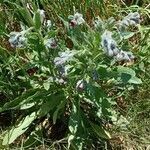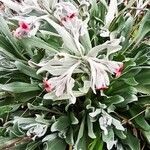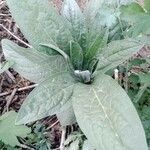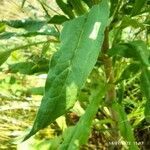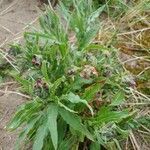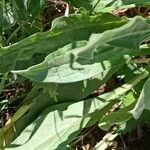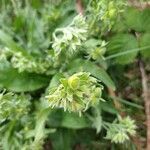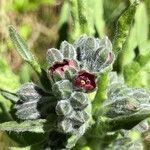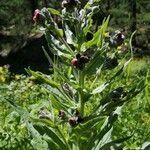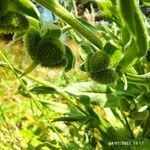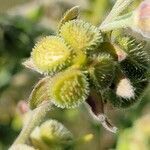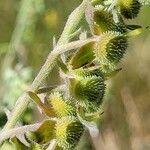A small plant. It grows 0.5-1 m tall. It is covered with fine downy hairs. The lower leaves are simple and have leaf stalks. They are oblong or sword shaped and 15-30 cm long. The upper leaves are smaller and clasp the stem. The flowers are reddish-purple and small. They are 5-10 mm across. They droop in clusters. The flowers are funnel shaped. The fruit is a small prickly nut.
